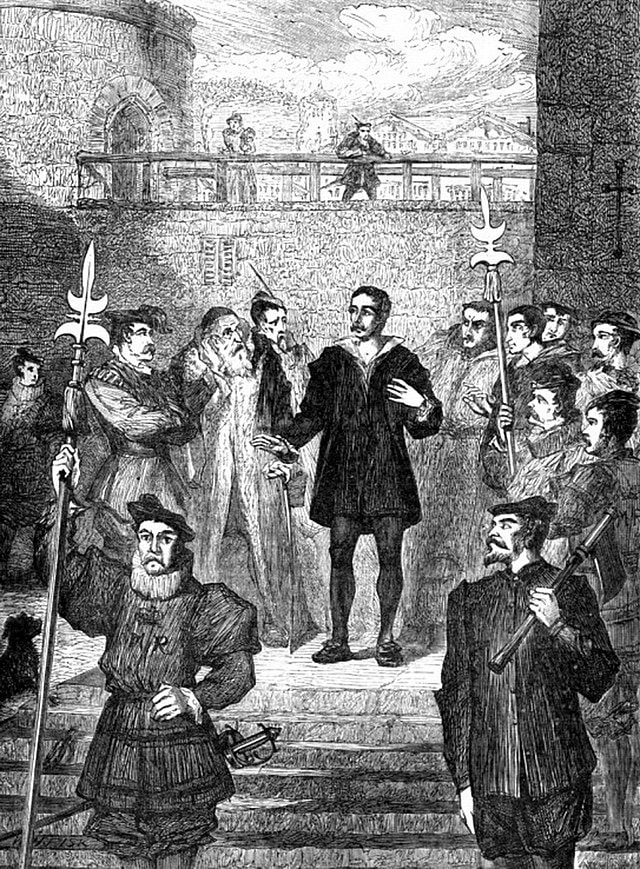
Let me start by saying that the man had a rebellion named after him, so this outcome was kind of inevitable! I’ve already written a post explaining how that rebellion might have succeeded – except that Mary, channeling her grandmother Isabella, not only made an inspired speech at Guildhall but also visited her defenders during the height of the battle. I’ve also already written a post about Wyatt’s surrender….so you would think I fully covered the topic. But there was another important, last-minute twist to the story!!
So, a little context: Gardiner did everything he could to get Wyatt to incriminate Elizabeth (and Henry Courtenay, who the rebels wanted to install as her husband), including promising a reprieve. Gardiner’s efforts did get Wyatt to admit sending Elizabeth a letter, and to claim that she had replied “but not in writing” (the story went that she had sent her servant, William St. Low, with the message that “she did thank him [Wyatt] much for his good will, and she would do as she should see cause”). This was enough for the Council to commit Elizabeth to the Tower – even though St. Low denied the story “with a wonderful stout courage, nothing at all abashed.”
But then the government proceeded with its plans to executed Wyatt (he had been convicted of treason after all…) – and their promise of a reprieve lost all its power. When Wyatt was on the scaffold, he made a final speech exonerating Elizabeth. “And where it said and whistled abroad that I should accuse my lady Elizabeth’s grace and my lord Courtenay, it is not so, good people. For I assure you neither they nor any other now in yonder hold or durance was privy of my rising or commotion before I began. As I have declared no less to the Queen’s Council. And this is most true.”
The priest who was ministering to Wyatt on the scaffold, Dr. Hugh Weston (Dean of Westminster), understood how incredibly damaging this was to the government (Gardiner really wanted to bring Elizabeth down). Weston tried to blunt the effect of Wyatt’s words by offering his own little explanation: “Mark this, my masters, he sayeth that which he hath showed to the Council in writing of my lady Elizabeth and Courtenay is true.” The crowd did not listen, nor did they care – a deathbed utterance like that has unbeatable impact (the same thing would happen later at Cranmer’s execution – another example of Marian overconfidence).
This incident changed everything. Within the month, Elizabeth was released from the Tower (granted, she remained under house arrest but the main danger was past for her….).
***
If you like my posts, you’ll love my books! My Seymour Saga trilogy tells the gripping story of the short-lived dynasty that shaped the Tudor Era. Jane the Quene skews romantic, The Path to Somerset is pure Game of Thrones (without the dragons), and The Boy King is a noir coming-of-age. Get them now through Amazon, Barnes & Noble, Kobo, and Apple, or even your local independent bookstore!

(PS Already read them? Did you love them? Then please review them – even just a stars rating! It makes a huge difference in helping new readers find them and would mean the world to me!)
Be First to Comment